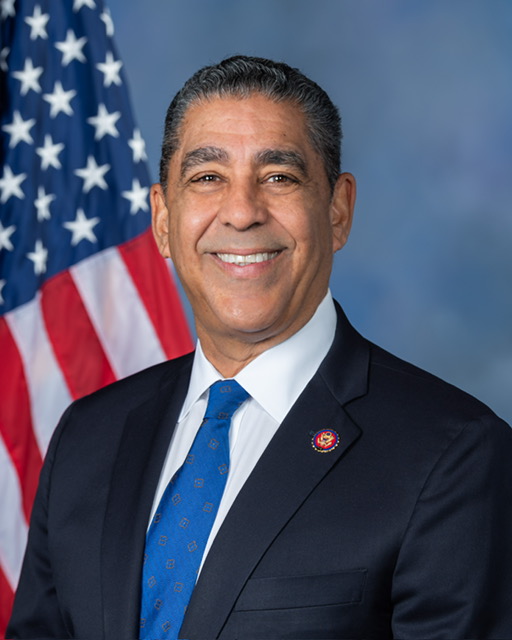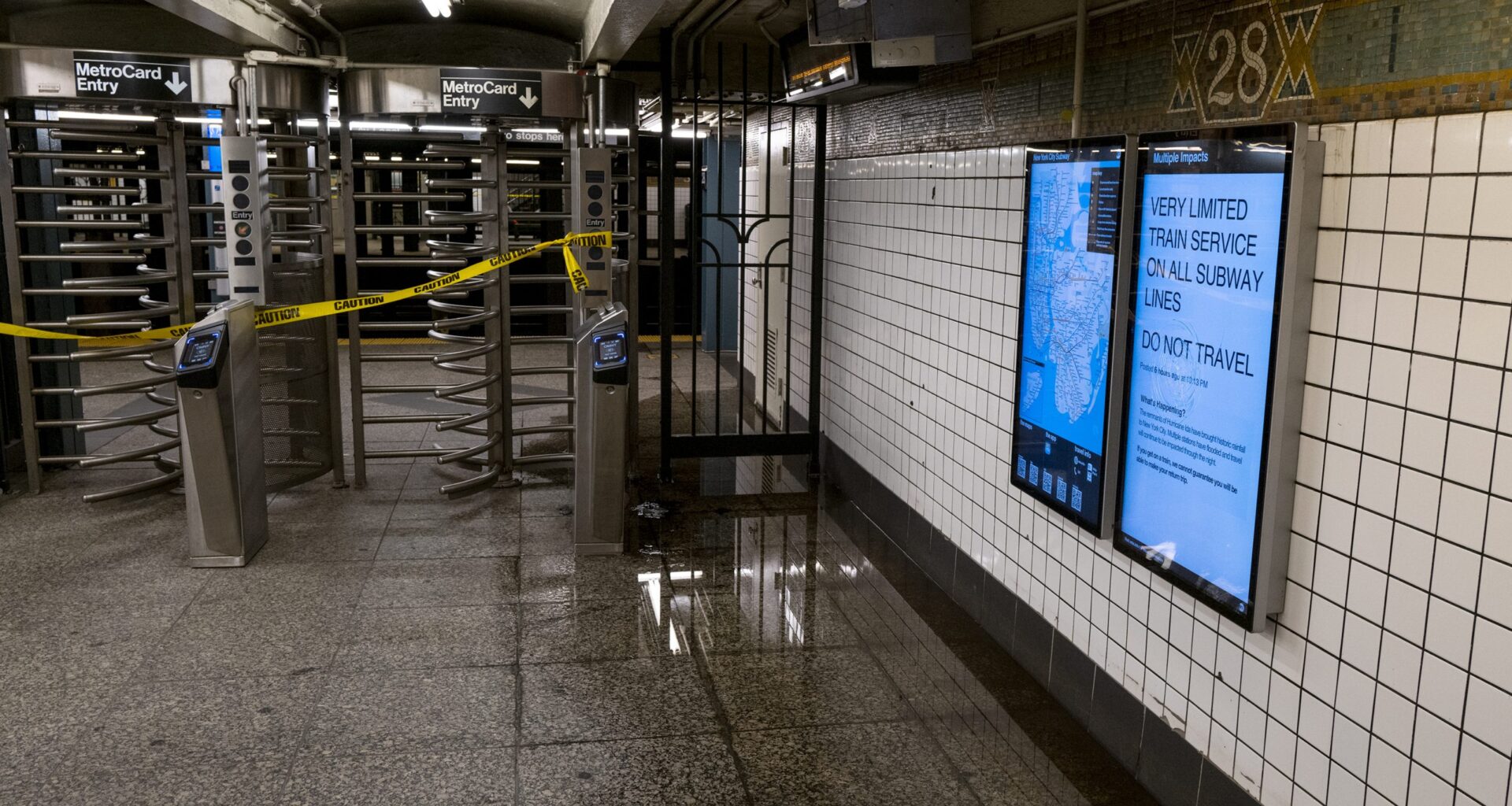Subways or submarines? Sen. Kristen Gillibrand and Rep. Adriano Espaillat reintroduced the Resilient Transit Act last week on July 16, coinciding with the recent flooding in MTA stations across the city.
The bill would put $300 million towards retrofitting public transportation systems against climate change-induced disasters through an existing U.S. Department of Transportation (DOT) formula fund program.
“The Resilient Transit Act of 2025 establishes the first-ever dedicated funding stream to proactively strengthen our transit systems, while working to make them more durable in the face of extreme weather and climate-driven threats,” said Rep. Espaillat in a statement. “I’m proud to join Sen. Gillibrand to introduce this critical piece of legislation once again, ensuring our infrastructure not only withstands storms today but continues to serve communities tomorrow. Together, we are committed to investing in public transit and safeguarding the lifeblood of cities around the nation.”
State of Good Repair grants provide capital assistance for transit agencies to maintain their lines in urbanized areas and such a formula would disburse funding if the bill passes. The Resilient Transit Act could help bankroll standalone projects or bolster broader resiliency efforts to better prepare for natural disasters fueled by climate change like earthquakes, wildfires and floods.
A few environmental justice provisions were added onto the reintroduced bill. Gillibrand’s office pointed to exacerbated impacts to Black and Brown New Yorkers due to more transit use and greater flooding in non-white neighborhoods in Texas and New York.
“In the case of extreme weather events, Black and Brown communities are more likely to live in neighborhoods that are at the front lines of the destruction,” said Gillibrand over email. “This bill would help communities across New York by increasing transit safety and reliability during and after destructive storms like the one in New York City earlier this month. Access to transit levels the playing field for everyone, and it must continue to serve as a lifeline for potentially impacted communities.”
 U.S. Sen. Kristen Gillibrand
U.S. Sen. Kristen Gillibrand
 Rep. Adriano Espaillat
Rep. Adriano Espaillat
Despite the timing, Gillibrand’s office maintains the bill’s reintroduction two days after stormwater flooded the 1 train route is a coincidence. On July 14, Central Park recorded 2.07 inches of precipitation surpassing Hurricane Henri four years ago. Only Hurricane Ida, which also occurred in 2021, documented more rainfall.
“As climate change increases the number and severity of extreme rainfall events the city is experiencing, we are doing things like increasing the number of trees in the city to reduce stormwater and using the latest available climate science and data to inform our infrastructure projects,” said Elijah Hutchinson, Mayor’s Office of Climate & Environmental Justice executive director, in a statement. “We also continue to look for every available dollar that can be put towards projects that address flash flooding and encourage all New Yorkers to use our Environmental Justice NYC mapping tool to explore the flood risk where they live and work.”
Gillibrand’s office points to the MTA’s Climate Resiliency Roadmap locally as the Resilient Transit Act navigates Capitol Hill. The gameplan identifies coastal surges, torrential rain, sea level rise and extreme heat as the four main climate threats for the transportation authority’s service area.
Adapting the city’s subway system includes the MTA’s recent “Fix and Fortify” program which led to nearly 4,000 “coastal surge protections” through $7.6 billion following damages from Superstorm Sandy in 2012. Additional efforts include elevating vents to prevent rainwater from entering underground to prevent subway flooding.
“With extreme weather events happening more and more frequently, a dedicated funding stream for transit resiliency projects is an absolute necessity,” said MTA Chair and CEO Janno Lieber over email. “It is vital to protect transit systems like the MTA –– that are not only antidotes to climate change but also economic engines for the entire country.”
Like this:
Like Loading…
Related
